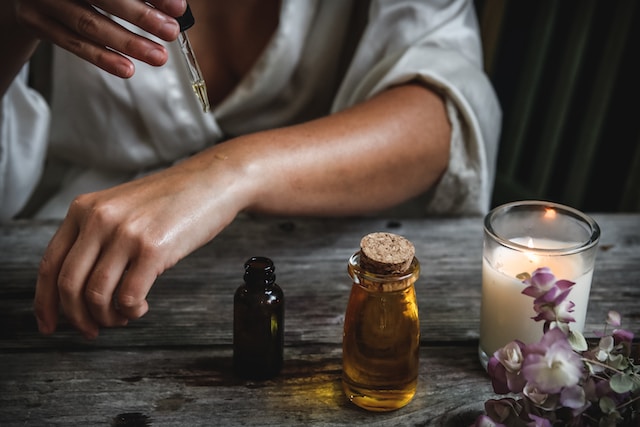- 31 May 2023
- 50
Enhancing Your Meditation Practice with Essential Oils

Meditation, a timeless practice celebrated for its ability to bring peace and clarity, has been further enriched with the integration of essential oils. These potent extracts from nature have the potential to heighten the meditative experience, offering a sensory pathway to tranquility and self-discovery. If you’re new to the world of essential oils and are curious about incorporating them into your meditation practice, this beginner’s guide will provide you with valuable insights and tips.
- Begin with a Clear Intention Before exploring the world of essential oils, it’s essential to establish a clear intention for your meditation practice. Take a moment to reflect on what you hope to achieve through meditation—whether it’s relaxation, focus, emotional healing, or spiritual growth. By understanding your purpose, you can select essential oils that align with your intention and support your journey.
- Choose High-Quality Essential Oils When it comes to essential oils, quality matters. Look for oils that are 100% pure, sourced from reputable brands, and obtained through ethical and sustainable practices. High-quality oils ensure that you experience the true benefits and avoid any potential synthetic additives or contaminants. Research the company’s transparency, testing procedures, and certifications to make an informed choice.
- Start with a Few Key Essential Oils As a beginner, it’s best to start with a few essential oils that are known for their calming and grounding properties. Lavender, frankincense, and chamomile are excellent options to begin your exploration. Lavender promotes relaxation, frankincense deepens spirituality, and chamomile soothes the mind. These oils provide a solid foundation for your initial experiments and offer versatile benefits for various meditation practices.
- Dilute and Apply Mindfully Essential oils are highly concentrated and should be diluted before applying them to the skin. For topical use, dilute a few drops of essential oil with a carrier oil such as jojoba, coconut, or almond oil. This not only ensures safety but also helps the oil spread evenly. Apply the diluted oil to pulse points, temples, or the palms of your hands before beginning your meditation. The act of gentle massage can deepen the relaxation and enhance the oil’s effects.
- Experiment with Inhalation Techniques Inhalation is another powerful way to incorporate essential oils into your meditation practice. You can place a drop of essential oil on a tissue, cotton pad, or even your meditation cushion and allow the scent to fill the space. Alternatively, you may choose to use an essential oil diffuser, which disperses the aromatic molecules into the air. Experiment with different inhalation techniques to find the one that resonates with you.
- Observe and Connect with Your Experience As you introduce essential oils into your meditation practice, pay attention to the sensations, emotions, and thoughts that arise. Each oil has its own unique properties and may evoke different responses within you. Be open to the experience and trust your intuition. Observe how the oils enhance or alter your state of mind and adjust your choices accordingly.
Remember, the practice of meditation is deeply personal, and essential oils serve as supportive tools along the journey. Allow yourself the freedom to explore, experiment, and refine your selection of oils over time. Embrace the moments of stillness and self-discovery that arise through the harmonious blend of meditation and aromatherapy.

